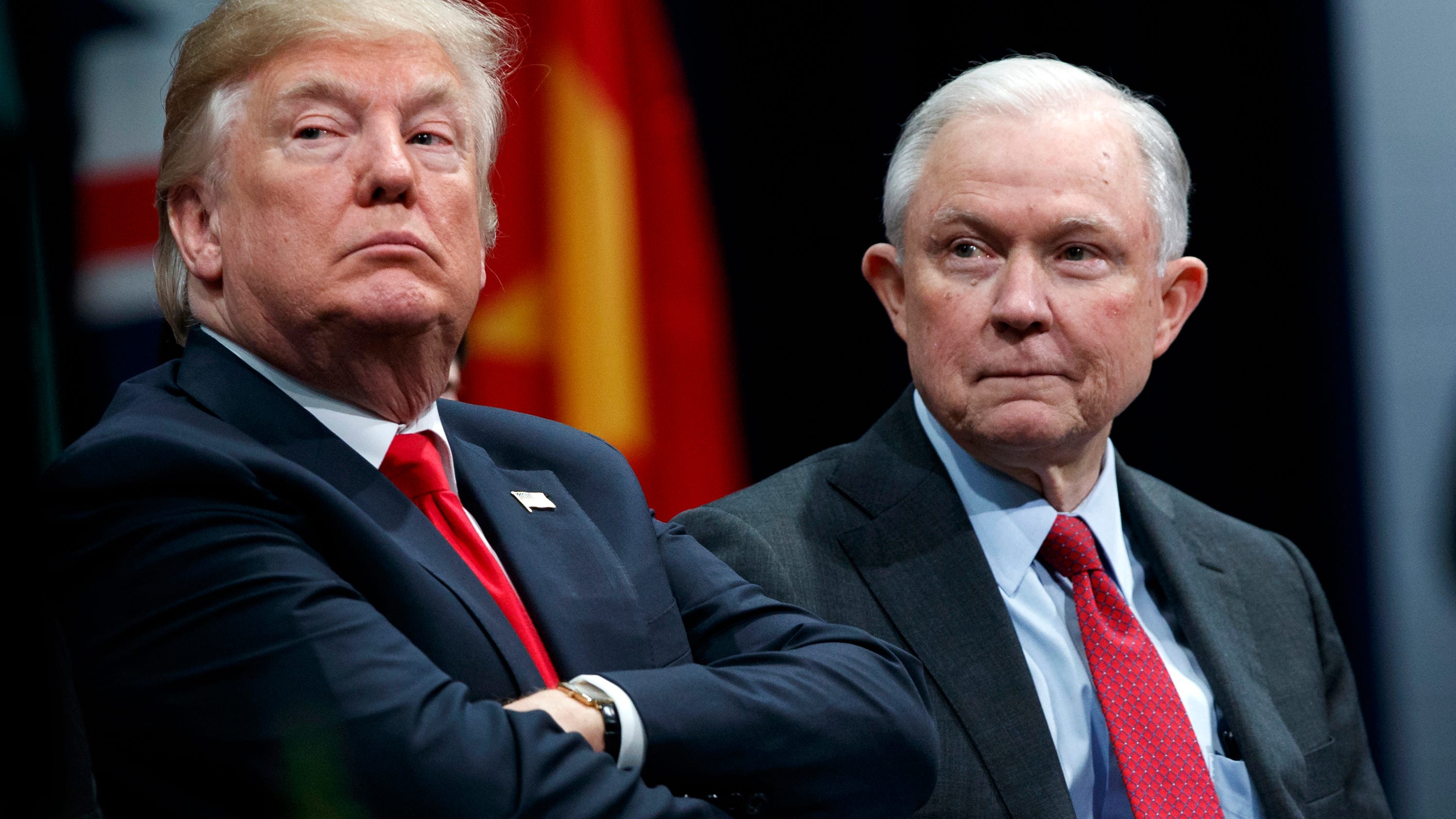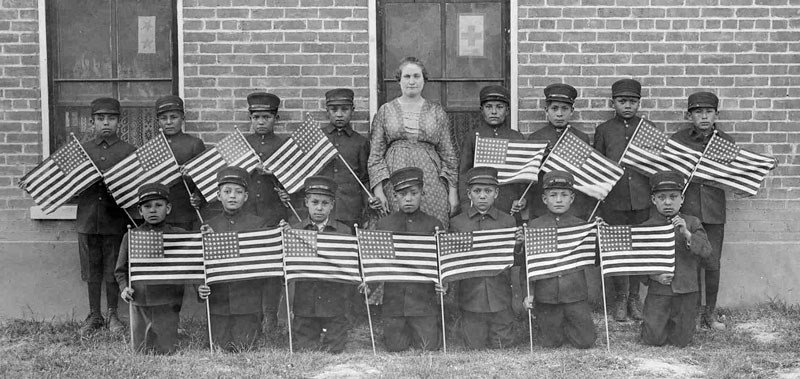As a nation we have always claimed that we need to take away children. The New York Times yesterday ran a deeply disturbing story examining closely the Trump Administration’s “Family Separation Policy” supported most forcefully by then-Attorney-General Jeff Sessions. “We need to take away children,” Sessions told prosecutors at the Mexican border. If people crossing the border cared about their kids, the Attorney General said that they would not have brought them. It did not matter how young. It did not matter if they were in diapers, or if they still were nursing. It did not matter what horrors in their homeland they ran from. And when called to account these Trump administration officials lied about it. They knew it was morally abhorrent, but they did it anyways.
It was a stunning story. It was not a surprising one.

One could write a history of North America, with the cruelty meted out on the children of peoples of color as the narrative thread weaving the entire horrifying tapestry together. Cruelty towards children runs through the entire story.
It rests at the center of the trade in human flesh central to this nation’s founding. Children ripped from parents. There is no way to excuse these horrifying crimes.
There is Columbus, whose big day is just around the corner. He looked at a child swimming, a little girl, and saw only that she would make a suitable slave. He scooped up Indigenous children, packed them aboard his ships, and sent them back for sale in Iberian markets. There is the murder of Paspahegh children by armed colonists from Jamestown. The colonist George Percy appeased his men, angry at taking any prisoners at all, by allowing them to throw these children into the James River and shoot them in the head. I think of the burning of Mystic fort in 1637, of so many other massacres of native peoples across the continent, where Native children fell beside their parents, victims of a style of warfare practiced without restraint by “civilized” peoples against their “savage” enemies. “Nits grow into lice,” the perpetrator of one of those massacres reportedly said. I think of the slaughter of Christian Conestogas by the Paxton Boys, the mass murder at Gnaddenhutten, the epidemics that carried off native children and sparked the Ghost Dance among their grieving parents, or the boarding schools where American officials so confident in their deluded good intentions collected and removed indigenous children from their homes. And today, when we can read of the murder of native peoples by well-armed police, the too-frequent disappearance or murder of Native American women and girls in both Canada and the United States, and the travesty of South Dakota’s treatment of Native American families in its foster care system. It is exhausting.
When I teach I tell my students about George Percy. That weak and cowardly aristocrat who settled at Jamestown led a raid by an English party against the Paspahegh Indians, whose town stood a short distance upriver from that sickly fortified settlement. Percy’s soldiers took the “Queen of Paspahegh” and her children hostage but his men began to grumble. He gave in to them, threw the children overboard, and allowed his men to entertain themselves by “shooting out their brains in the water.” I tell them of the Paxton Boys’ massacre of peaceful Conestoga Indians in December 1763. The Paxton men killed fourteen of them: men, women, and a couple of children, no more than three years old. The Paxton Boys split their skulls with tomahawks, and took their scalps as trophies. This was intimate violence, acts committed at close range. To children. To babies. In order to help my students make sense of the Ghost Dance, I tell the students about the movement that occurred on the Kiowa-Comanche-Apache Reservation. Among the Kiowa ghost dancers were a lot of parents, and they danced on the snowy ground hoping to see, once again, the children who had died, innocents slaughtered by measles, whooping cough, and pneumonia. Grief lay at the broken heart of the Ghost Dance movement. And of course that grief continues. Harold Napoleon, in Yuuyaraq: The Way of the Human Being, a book that will break your heart as it educates you, described Alaska Native communities immersed still in a grief caused by what he called “the Great Death.”
We cannot teach the past without considering the pain, the grief, and the sadness that people felt. If we want to reach our students, we need to help them feel history as they learn it, to consider those moments of brutality and violence and sadness. And in so many ways, this current president and his cascading collection of war criminals, grifters, and cruel incompetents forces us to realize that the pain we teach and write about is still very much present and very much alive. They feed on the misery they cause, find justification in your suffering. There is so very much at stake in the approaching election.


Great observations! The oodles of massacres perpetuated by the U.S. government and military, as well as mobs, are rarely discussed in neither K-12 settings nor within higher education. All that you have mentioned needs discussion, elucidation, and widespread dissemination…. I think of the Sand Creek Massacre, for example…. In a recent interview of Bob Dylan, historian Douglas Brinkley wrote, “A few years ago, sitting beneath shade trees in Saratoga Springs, N.Y., I had a two-hour discussion with Bob Dylan that touched on Malcolm X, the French Revolution, Franklin Roosevelt and World War II. At one juncture, he asked me what I knew about the Sand Creek Massacre of 1864. When I answered, ‘Not enough,’ he got up from his folding chair, climbed into his tour bus, and came back five minutes later with photocopies describing how U.S. troops had butchered hundreds of peaceful Cheyenne and Arapahoe in southeastern Colorado.”
I think about the CDC statistics that have shown: “When compared to their percentage of the U.S. population, Natives were more likely to be killed by police than any other group, including African Americans. By age, Natives 20-24, 25-34 and 35–44 were three of the five groups most likely to be killed by police. (The other two groups were African Americans 20-24 and 25-34.) [Mike] Males’ analysis of CDC data from 1999 to 2014 shows that Native Americans are 3.1 times more likely to be killed by police than white Americans.”
The list of evil gets overwhelming. It does not matter if it is of the fifteenth or twenty-first century variety. The bottom line is that it is essential that we teach not only empathy (which can be exhausting) but also compassion.